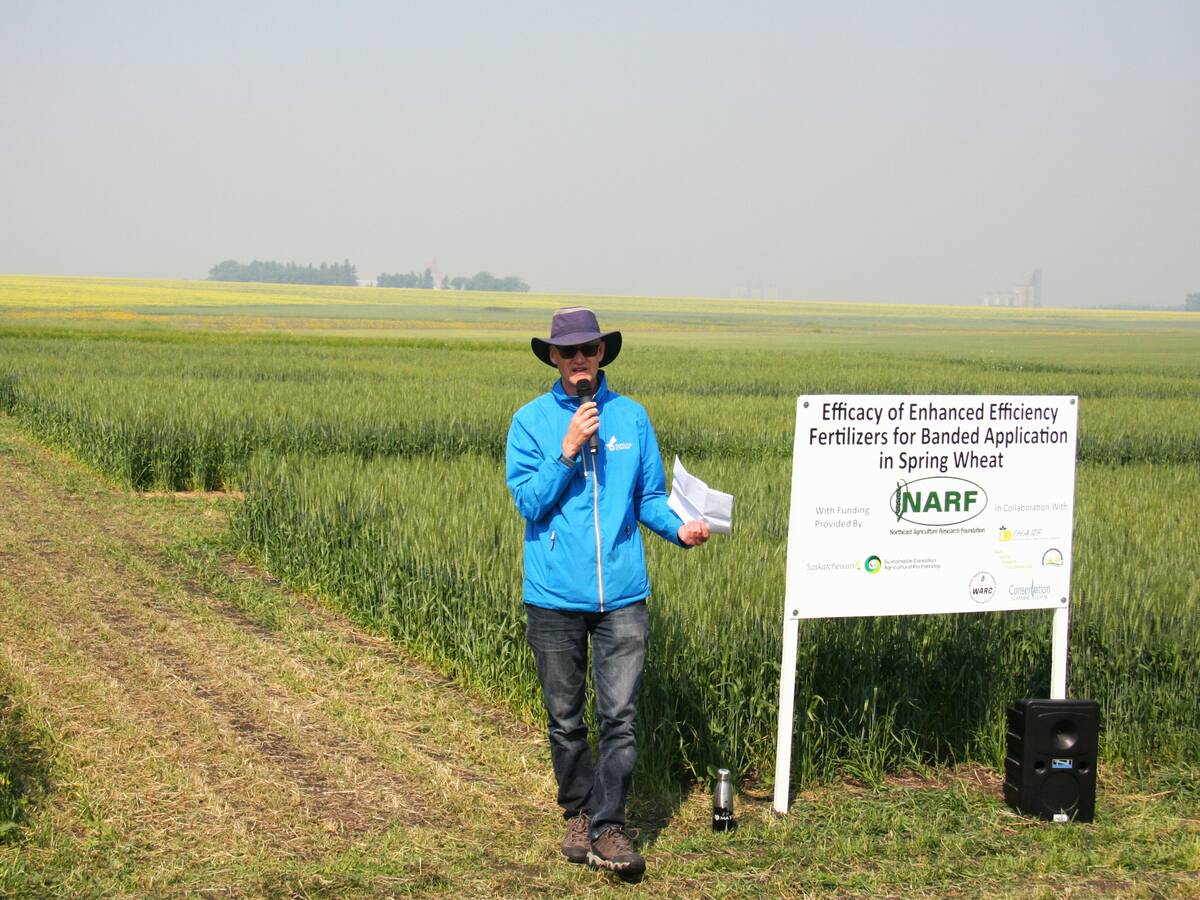Precise timing of fungicide applications can ensure you don’t spray too soon and waste product, or spray too late for the chemical to work. Predicting an outbreak would help.
Fungicides work, but timing is crucial. Unfortunately, farmers have not had the tools to make accurate kill decisions. Instead, they rely on intuition and visual symptoms. When symptoms finally appear, it’s often too late to spray within the recommended window.
The result is that growers spray too much, too often and at the wrong time. Misuse of the fungicide allows diseases to develop immunity. An example of how chemical misuse can get out of hand is the herbicide resistance that now affects all areas of crop production.
Read Also

Fertilizer method’s link to emissions studied
A researcher says others studying greenhouse gas emissions aren’t considering how the loss of nitrogen into the atmosphere correlates with fertilizer application or if there is an impact to yield.
Farmers would achieve optimal use of fungicides if they knew what disease was on the way and when it’s expected to attack. A reliable system providing a two-week warning could let farmers dial in the spray application to make a strategic hit on the precise day it would have maximum impact.
Such a real-time warning system would eliminate preventive sprays that waste money and dilute the efficacy of fungicides.
BioScout, a new disease detection system from Australia, promises a solution to the disease prediction challenge. Each BioScout unit is a self-contained solar-powered sensor station that provides the same data as any conventional weather station. But that’s where the similarities stop.
In addition to tracking environmental factors, BioScout collects spore samples from the air, analyzes them and compares the data to crops growing within the coverage area. BioScout does not concern itself directly with each crop. It deals only with the disease.
The conventional system of sending spore samples for laboratory analysis often takes too long to be effective. By the time you get the report, the damage may have already been done.
BioScout does its own analysis in the field, within the unit, in real time.
The technology uses algorithms and artificial intelligence to track the spread of fungal diseases.
This provides growers and agronomists with real-time location and disease specific data. For example, in a heavy canola-growing vicinity, BioScout would automatically be on high alert for sclerotinia.
The BioScout project is funded in part by the Global Agri-Food Advancement Partnership (GAAP) with headquarters in Saskatoon. It is a privately operated investment incubator that teams up with new technologies to improve efficiency, sustainability and profitability in agriculture.
Jay Robinson, chief executive officer at GAAP, says BioScout is more about tracking airborne spores than studying the crop.
“If you think about some of the common diseases such as sclerotinia, fusarium head blight or wheat rust, the system monitors their location and intensity,” said Robinson in a phone interview. It’s up to the BioScout subscriber to read the information and make the decisions.
“The algorithms are nearly complete for all the main diseases on the Prairies. Blackleg is complete. We have a little more work to do on sclerotinia. We concentrate on the diseases that are economically more significant.”
The BioScout unit can collect airborne spores and analyze them in the field unit in the same manner they’d be analyzed in a lab. A sticky gel catches all types of spores and exposes them to the sensor.
The sensor tells the controller that a certain disease spore is increasing and may be travelling toward a protected canola region. However, before sending an alert message to the farmer, BioScout considers the environmental conditions of the fields it’s assigned to protect. If the conditions are not conducive for an outbreak, there’s no warning. If it looks like conditions may become ripe, the grower is immediately notified.
Each BioScout can protect 2,500 acres. A strategic location should be chosen so the unit protects the largest acreage of the most valuable crops. BioScout units are fully autonomous and operate for years with zero human intervention necessary.
Prices for ownership, subscriptions or leasing arrangements have not been completed.
For more information, visit www.bioscout.com.au/.


















